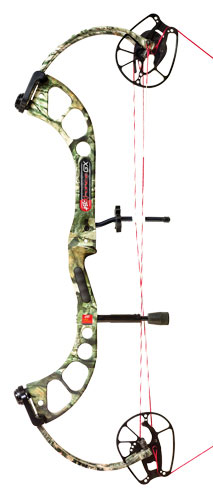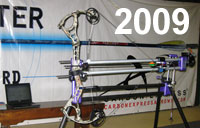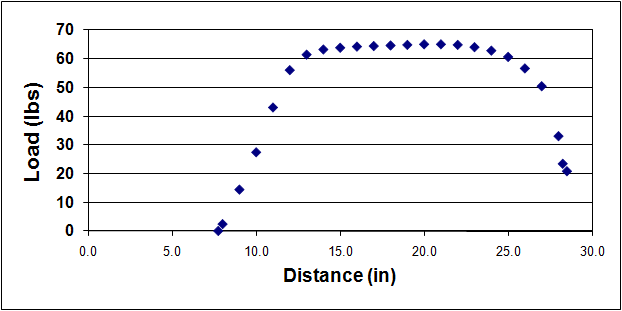PSE GX
Personal Commentary by Jon Silks about the PSE GX:
Fast. Fast. Fast. The GX is a flat out screamer trouncing the competition in our speed trials. All of the other rigs were separated by slightly over 20 fps and then there was the GX, which had its closest competitor come in between 16 and 17 fps behind. The dual cams pull stiff as you might expect from a speed bow, however, a surprise was found in the Shock/vibration category as this rocket launcher scored an impressive #3 position. During my personal testing of each rig I kept going back to the PSE as a comparison for shock/vibration for the other bows. If PSE can design a lightning bolt to register little shock/vibration I expect that slower rigs should be able to compete with it. Its #3 shock/vibration ranking would seem to indicate otherwise however. I personally prefer a grip that is somewhat thicker than PSE's BEST grip, however, it certainly has its fans. The GX has excellent balance and handles well with a comfortable mass weight and relatively short axle-to-axle measurement.
|
 |
||||||||||||||
Using this Table: Kinetic Energy: (in foot-pounds)
This is the energy that actually goes into propelling the arrow. Basically it is the energy that is left over from the stored energy after all of the bow system friction is accounted for. |
|||||||||||||||
Using This Graph: The area under the graph signifies the amount of energy stored by the system from brace height to full draw (power stroke). The shape of the curve is generated by a plot of draw weight in pounds against draw length in inches and gives an indication of how the bow will feel when drawn. The more rounded the curve the more "smooth" the feel of the draw cycle, however, if the curve is "squared-off" it will likely feel more aggressive. The trade off comes in performance, as the more aggressive curve is generally indicitive of more stored energy and more speed.
|
|||||||||||||||










